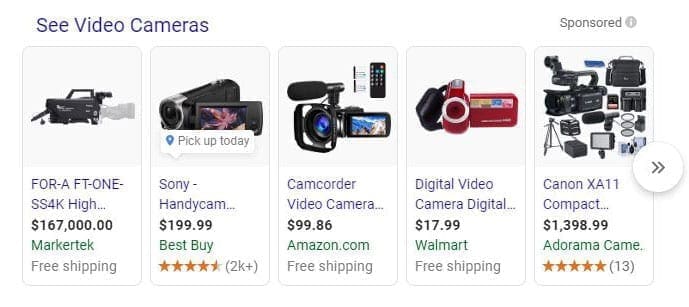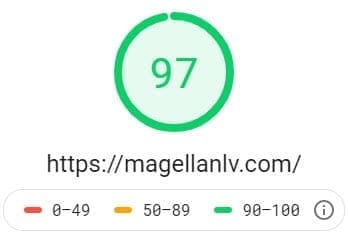You just built a new site but it is not ranking well in Google search results. You want to know why your business doesn’t appear on the first page on Google, right? Did the web design company account for Google ranking factors?
Below is a list of SEO ranking factors you’ll need to follow to rank #1 on Google:
1. Technical SEO Signals for Google
Take a look at the content optimization elements for better search engine rankings. These include, but are not limited to:
- Use keywords in the page titles.
- Use keywords in the page titles.
- Create a unique meta description for each page.
- Use keywords in image alt tags.
- Use Schema Markups to tell Google what kind of content you are creating.
- Use Accelerated Mobile Pages (AMP) to make your pages faster.
Making these changes or improvements can help your user experience. Google uses artificial intelligence to better rank web pages (aka RankBrain). It uses signals such as click-through rate, bounce rate, and time on site to rank pages.
2. Other Opportunities to Rank (SERP Features)
The Zero Position on the Search Engine Results Page is generally for the SERP features. A SERP feature is any result that is not a traditional organic listing. These features include Google Ads and Product Listing Ads, Instant Answers, Local Packs, Image Carousels, Featured Snippets, Top Stories, Reviews, AMP etc. Here is a list of SERP features and examples.

Listing Ads

Instant Answers

Local Packs

Image Carousels

Featured Snippets

Top Stories

Reviews
Identify opportunities to get listed in the SERP features. You can see some of these opportunities on a keyword ranking report from tools like Moz or SEMRush. It will help you to appear above the traditional organic search results. It gives your business the opportunity to win relevant traffic to your site.
3. Google My Business
Google My Business is a free business profile that lets business owners easily connect with customers across Google Search & Google Maps. According to local ranking factor industry research, Google My Business “signals” is the most important ranking factor for local pack rankings. These signals are the business name, address, telephone number, primary category, and website.

Being active on your profile by postings, responding to messages, and reviews will also help. Google My Business signals had a significant increase in ranking importance between 2017 and 2018 — rising from 19% to 25%.
Don’t just create a Google My Business profile, proactively use it! Share posts, list your products or services, show your menu,and engage with customers for Google reviews. You can use the “Insights” to see how people found your business and what action they took such as visits to your site, request for directions, or calls.
4. Duplicate Content
Duplicate Content can be either exactly duplicate or closely similar text that appears on multiple pages on the internet. Ideally you don’t want to have duplicate content on your site. It splits the value of the content to the duplicate page instead of one page to rank well.
Search Engines, just like actual people don’t want to read the same thing multiple times. Try putting things into your own words or writing the content from a different perspective.
SEO Tools such as Moz, SEMRush, and ahrefs can help you to identify duplicate content. Some of these tools provide guidance on how to resolve technical SEO issues. Google Search Console can also help and gives information to “avoid creating duplicate content”.
5. Create, Add Or Update Your Content
Content can be in the form of blog posts, infographics, videos, quizzes, etc. When content creation is done effectively, it will help you rank for specific keywords and improve the click through rate to your site. Consider the content length and how the piece of content will be used or deliverable to your audience.
In many cases, new content often leads to Google re-indexing and listing your content into the search engine results. New content can help to bring new people to your site and keep people coming back which gives your website more authority on the search engines.
6. Mobile-Friendly
As of July 1, 2019, mobile-first indexing is enabled by default for all new websites. The older or existing sites are informed by Google Search Console of the date when your site has been switched to mobile-first indexing. Google Search Console is a free tool that will help you to measure your website’s search traffic, performance, fix issues, and get into Google search results.
So, your new website should be designed for a mobile user experience before designing it for the desktop version. If you have an older site, you should proactively identify and implement mobile improvement to prepare your site for mobile-first indexing.
According to Google, 94% of people with smartphones in the United States search for local information on their phones. 77% of mobile searches occur at home or at work, places where desktop computers are likely to be present. If you are not mobile-friendly, your business is missing out on the opportunity to win new customers. Test your site with Google’s Mobile Friendly test, see the results of your site’s mobile version, and take action!

7. Loading Speed
In July 2019, Google announced that page speed will be a ranking factor for mobile searches. Based on data from Alexa, web pages on fast-loading sites rank significantly higher than pages on slow-loading sites.
Try the PageSpeed Insights tool for information to make your web pages fast on all devices. By improving your site, it should help your local SEO and help people searching for your business.

Resource: PageSpeed Insights
8. Social Media
Google uses social signals to determine which websites are active and tells them which sites should rank higher. Social signals are interaction metrics on social platforms such as likes, dislikes, shares, votes, views, etc. Search your competitor by name, you will likely see their social media accounts after their company domain in the search engine results. It’s another opportunity for your brand name to appear in the results. It can help to protect your brand by claiming, monitoring, and communication on social platforms.
Create and use your social media accounts to share information with potential and existing customers. You can use social media to promote jobs and promotion without an advertising budget. Some businesses even use social media for customer service and proactively get product or service reviews on Facebook.
9. Backlinks - Fans or Votes of Confidence
Backlinks to your site are important because they represent a fan or vote of confidence from one website to another. The more links you have to your web page or site the more likely the search engine will rank and show your site on the search engine results page (aka SERP).
If all SEO ranking factors are equal between your business and a competitor, high value backlinks can give you a competitive advantage to rank number 1. Create a content marketing strategy to assist in your backlinking or link earning campaign. Content marketing is focused on creating, publishing, and distributing content for your target audience online. Good content often leads to backlinks and sharing of the content.
10. Unsecured or Not Accessible to Search Engines
Your website should be secured with a SSL certificate. According to John Mueller at Google, it’s a “light-weight ranking factor” and it is great for the users because it implies the site is safe for usage.
Use robot.txt files tell Google where to go for information on your site. You should make sure that you have an XML sitemap and add it to your Google Search Console so Google can access the pages for indexing.
You want to make it easy for Google to find and get your content so you can rank higher in the search engines. If you use WordPress, SmartCrawl and Yoast plugins will set-up a sitemap for you. If not, check out XML-Sitemaps.com to generate a sitemap. If someone manages your site, confirm that the XML sitemap has all of your web pages in it and use the Open robots.txt tester to make sure you are not blocking content from Google.
Conclusion
The list of seo ranking factor you need to rank #1 will continue to evolve. The list is a good start to improve your ranking. I would recommend that you continue to monitor your ranking and overall organic search traffic to see what is having an impact on your business. Put together key performance metrics to gauge progress and the goals of your SEO.
Stay up-to-date on Google algorithm changes.
Get a Free SEO audit to see if your site has these items implemented. If not, hire an SEO agency or SEO consultant to resolve any issues.

Leave a Reply